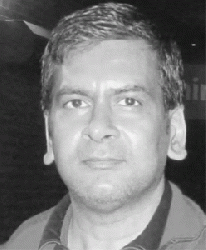The tragic events that unfolded on Sep. 11, 2001 gave birth to an ugly and embarrassing chapter in America’s history-the post 9/11 anti-Islamic and Arab era that continues today.
Despite relentless national efforts to combat the negative stereotypes and intolerance of Muslims and Arabs that’s emerged after 9/11, hate crimes against them and people perceived to be members of their communities are at their height more than 10 years later according to activists and reports from the Southern Poverty Law Center (SPLC).
Osama Siblani, publisher of The Arab American News has chronicled the widespread discrimination faced by Muslims and Arab Americans since 9/11 in the paper, and says last year hate related incidents targeting Muslims and Arab Americans increased noticeably in comparison to the first few years following 9/11.
SPLC reports that hate crimes against perceived Muslims, which jumped up 50% in 2010 largely as a result of anti-Muslim propagandizing, remained at relatively high levels last year, according to 2011 hate crime statistics released by the FBI.
SPLC says that there were 157 reported anti-Muslim hate crimes in 2011, down slightly from the 160 recorded in 2010. The 2011 crimes occurred during a period when Islam-bashing propaganda, which initially took off in 2010, continued apace.
On Thursday, Dec. 27 a Queens, New York man was killed after a woman pushed him on the tracks of a subway station because she thought he was Muslim. After an investigation, police learned the victim Sunando Sen, 46, an immigrant from India was actually a Hindu.
The woman, Erika Menendez, 31, said she pushed Sen onto the train tracks because she hates Hindus and Muslims. “I pushed a Muslim off the train tracks because I hate Hindus and Muslims ever since 2001 when they put down the twin towers I’ve been beating them up,” she told police according to the district attorney’s office.
She was charged with second-degree murder as a hate crime. At the time of the incident it was uncertain whether Sen was Muslim, although Menendez believed he was based on his features. She initially ran away after pushing Sen, and was caught after someone saw and identified her from a video that was released of the incident by police.
The tragedy comes only weeks after Pamela Geller placed hate-ads targeting the Arab and Muslim community in New York subway stations. One of the ads implies that Arab and Muslims are savages and another ad has an image of the World Trade Center exploding next to a quote from the Qur’an.
Sun’s murder is an example of how such hate speech can lead to and incite violence against Arabs, Muslims and people who’re perceived to be of Muslim or Arab descent.
Civil rights groups across the country have warned public officials about the impact such ads can have against Muslims and Arabs. They’ve also raised discussions on the promotion and placement of ads the vilify a group of people.
Some of the most recent hate crimes against Muslims and Arabs include: The Nov. 18 repeated stabbing of a man from Queens, New York outside a mosque by another man who shouted racial obscenities about him; on Nov. 24 two teens beat a 70-year-old man from Queens, NY after asking whether he was Hindu or Muslim; on Dec. 12 a man walked into a mosque in Fremont, California, with a gun and threatened to kill everyone, but eventually left before harm was done to anyone. There was also a mass shooting at a Sikh religious institution in Wisconsin last year. Members of the Sikh community aren’t Muslim, but often perceived to be.
American Muslims may feel pressure to take extra precautions because of the heinous hate crimes against members of their community. “Our focus is not to urge Muslims to prepare for more attacks or be mindful of the potential of more attacks. Rather we emphasize a community response to marginalize hate speech and hate motivated crimes,” Muneer O. Awad, a spokesperson for the Council on American Islamic Relations of New York said. He’s urging people to respond to hate crimes by being vocal and productive; reaching out and working with other members of the faith community; host interfaith events; invite people to Muslim community events; be accessible to neighbors and community members who are not Muslim; engage and serve their local communities and be a resource for elected officials. Engaged constituents will be more likely to have elected officials stand with and support them.
“If our neighbors, other faith institutions and our elected officials know us, and support us, the words of the anti-Muslim hate groups will be condemned. Personal contact will alleviate any phobia derived from ignorance, and the challenge we face is creating that personal contact in an organized and united manner to account for the fact that American Muslims make up roughly between 1-2% of the total U.S. population,” Awad said.
He says there’s an obvious connection to 9/11 in many of the hate crimes, but the increase in them can also be related to other phenomena such as the rise in designated anti-Muslim hate groups, and the increase in policies that promote institutionalized Islamophobia such as the NYPD mass surveillance of Muslims, TSA and CBP, TSA racial profiling and political promotion of anti-Muslim legislation.






Leave a Reply